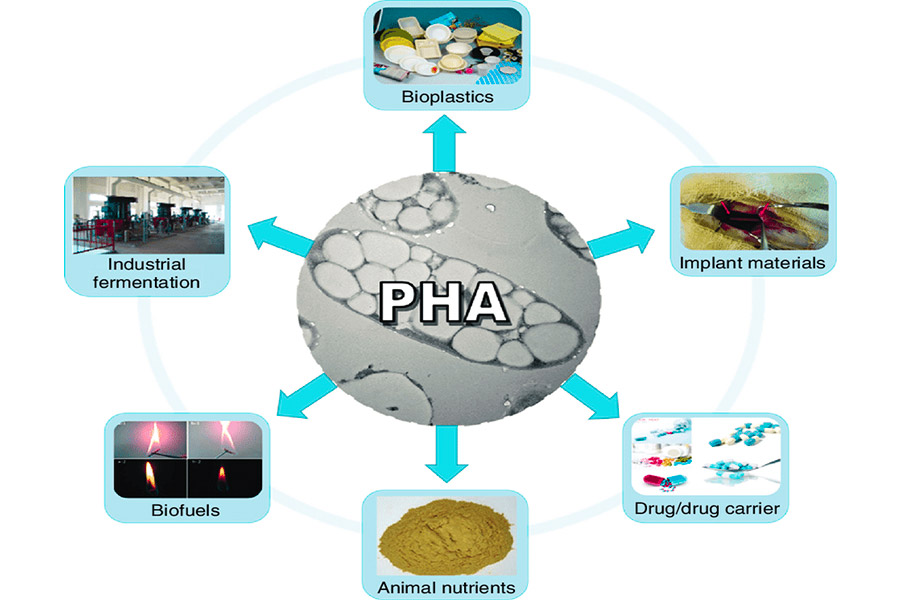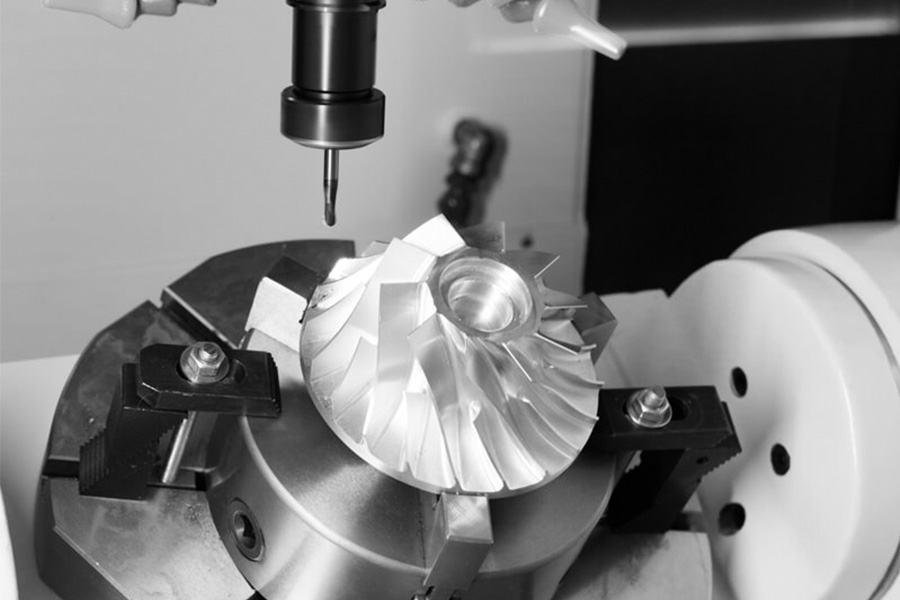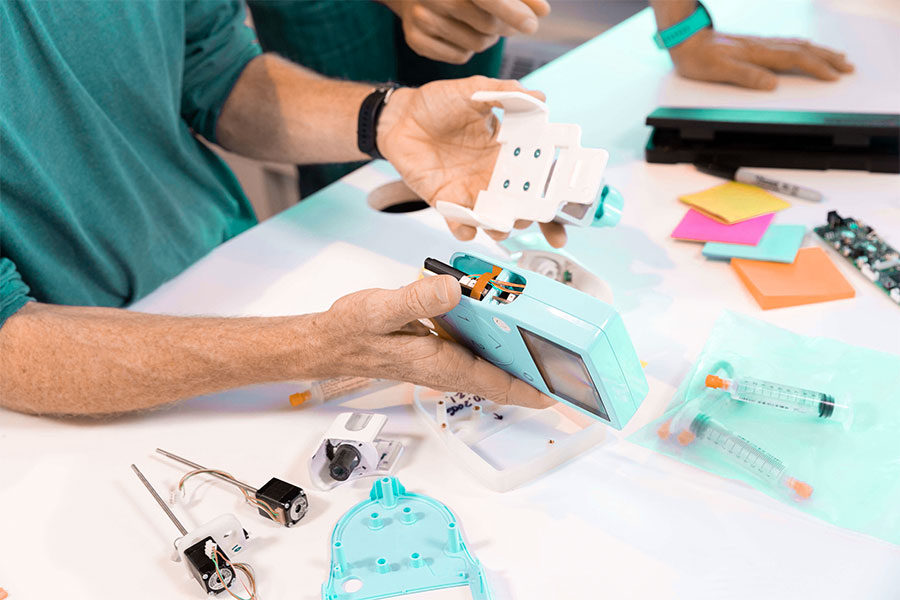현대 제품 개발에서 빠른 프로토 타이핑은 개념에서 현실에 이르기까지 핵심 교량이되었습니다. href = "https://jsrpm.com/blog/what-is-rapid-prototyping"> 빠른 프로토 타이핑은 3D 프린팅 및 CNC 가공과 같은 기술을 통해 프로토 타입을 구성하는 빠른 방법입니다. 반복주기를 단축하고 시행 착오 비용을 줄임으로써 혁신, 사용자 상호 작용 경험을 검증하거나 구조적 강도를 테스트할지 여부.
그 핵심 가치는 전통적인 개발의 후반에 디자인 초기 단계에서 발생하는 문제를 드러내므로 자원 낭비를 크게 줄입니다. 빠른 프로토 타이핑에서 균형을 잡는 것은 심층적으로 논의 될 것이며 과학적 의사 결정을 통한 효율성과 품질에 대한 협업 혁신을 달성하는 방법을 분석합니다.
빠른 프로토 타입은 3D 인쇄, CNC 가공, 주입 몰딩 등을 통해 프로토 타이핑 모델을 빠르게 구성하는 방법입니다. 개발주기 및 비용을 최소화하여 제품 개발의 초기 단계에서 설계 개념의 기능, 타당성 및 사용자 경험을 검증합니다.  빠른 프로토 타이핑은 무엇이며 그 핵심 목표는 무엇입니까?
빠른 프로토 타이핑은 무엇이며 그 핵심 목표는 무엇입니까?
이 검증 모드는 변환 효율성을 가속화 할뿐만 아니라 물리적 모델을 통해 설계 합격성을보다 직관적으로 평가하는 데 도움이됩니다. href = "https://jsrpm.com/blog/how-does-rapid-protoping-work"> 이후 대량 생산 위험 감소 .
빠른 프로토 타입이 제품 개발에 없어지는 부분이 없습니까?
오늘날의 치열한 경쟁 시장에서 빠른 프로토 타입은 개념에서 대량 생산에 이르기까지 핵심 촉매 제품 개발이되었습니다. 방법 :
< 빠른 프로토 타이핑 물리적 모델을 통해 디자인 세부 정보를 시각화하여 팀이 대량 생산 전 잠재적 결함을 식별 할 수 있도록 도와줍니다. 금속 또는 플라스틱 프로토 타입을 신속하게 생산하는 가공 및 3D 프린팅 , 디자인이 허용 요건을 충족시키고 후기 재 작업 비용을 줄입니다.
가속 반복 및 효율
js는 1-2 주간의 빠른 전달 용량을 가지고 있으며 (주문의 98%는 시간이 지남에 따라) 비즈니스가 가장 짧은 시간에 여러 설계를 테스트 할 수 있습니다. v-7b79c89 ="j js clustom with a a a a a clustit. 3 일 만에 스티어링 시스템의 프로토 타이핑을 완료했으며 전통적인 방법에 비해 80%의 속도가 증가하여 시장보다 우위를 점합니다.
.3. data-len = "53"data-v-7b79c893 = "" "> 다중 재료 적응 및 기능 검증
JS는 금속, 플라스틱 및 복합재를 포함하여 50 개 이상의 재료의 처리 기능을 지원하여 경량에서 내열성에 이르기까지 요구됩니다. 기계적 강도로. js는 3D 인쇄 엿봄 자료와 CNC 티타늄 합금 성분의 조합을 사용하여 고객이 프로토 타입 단계에서 임상 응용 분야를 검증 할 수 있도록 돕기 위해.
. data-translateid = "8d53cae38e46373737b4f45e50d3fbfb4f"data-pos = "3"data-len = "47"data-v-7b79c893 = "" ">
JS는 지능형 제조 공정을 최적화하여 평균 프로토 타입 비용을 20%, 프로젝트 리드 시간을 15% 줄입니다. STEP/STL과 같은 20 개 이상의 형식의 파일 및 24 시간 기술 응답은 디자인에서 프로덕션으로 의사 결정 프로세스를 추가로 압축합니다.
5. data-len = "19"data-v-7b79c893 = "" "> 녹색 제조
JS의 30% 재료 회복 및 15% 에너지 소비와 같은 환경 친화적 인 프로세스는 빠른 프로토 타이핑 요구 사항과 매우 호환됩니다. href = "https://jsrpm.com/industry/renewable-energy"> 새로운 에너지 고객은 저탄소 재료의 JS 프로토 타입 테스트를 통해 제품의 수명주기 지속 가능성을 성공적으로 검증하여 녹색 인증에 대한 중요한 데이터 지원을 제공합니다.
프로세스 선택을 통해 복잡한 프로토 타입의 주요 설계를 어떻게 달성 할 수 있습니까?
1. data-len = "40"data-v-7b79c893 = "" "> 다중 프로세스 공동 최적화
복잡한 프로토 타입 구조의 다차원 수요를 충족시키기 위해 JS는 CNC 가공 및 3D 인쇄의 프로세스 전략을 채택합니다. f 또는 예제, t hin-walled 금속 부품은 5 개의 축 CNC 기계를 사용하여 정밀도로 절단되는 반면, 내부 지원은 빠르게 3D 프린팅을 사용하여 형성되어 있으며, 3D 프린팅을 사용하여 빠르게 형성됩니다. 테스트 요구 사항 및 전달주기를 줄입니다.
js ± 0.005mm CNC 가공 정확도 및 산업 등급 3D 인쇄 해상도는 복잡한 프로토 타입의 기하학적 기능을 정확하게 재생할 수 있습니다. 두께가 5mm 인 0.3mm 마이크로 포어 어레이. 전략, JS는 설계 요구 사항을 성공적으로 구현합니다.
3. data-v-7b79c893 = ""> 재료 적응성
JS의 자료 리소스 라이브러리는 다양한 구조적 특성에 대한 다양한 옵션을 제공 할 수 있습니다. 압축 성형을 통해 고강도의 가벼운 프로토 타입으로 제작 된 반면, 실리콘 성형 기술은 단단한 것에서 탄성에 이르기까지 실리콘 고무 소프트 부품의 유연한 구조를 확인하는 데 사용됩니다.
4. data-len = "41"data-v-7b79c893 = "" "> 디지털 시뮬레이션 및 프로세스 검증
생산 전에 JS는 CAE 시뮬레이션 기술을 사용하여 처리 위험을 예측하고 빠른 모형을 통한 처리 실현성을 확인합니다. 시뮬레이션 복잡한 차량 브래킷 프로토 타입 최적화 , 절단 매개 변수 최적화, 최종 제품 자격 속도를 75%에서 92%로 증가시키고 R & D주기를 40%
단축합니다.5. data-pos = "3"data-len = "28"data-v-7b79c893 = ""> 빠른 응답 및 반복
JS의 24 시간 기술 응답 메커니즘 및 자동 인용 시스템은 고객이 빠른 mockup phase. 프로토 타입 로봇 조인트 스트레스 테스트 표준을 충족시키지 못했고 JS는 48 시간 이내에 재료 변경 및 프로세스 수정을 완료하여 프로젝트가 시간이 지남에 따라 정시를 완료했습니다.
신흥 재료가 프로토 타입 설계에 미치는 영향은 무엇입니까?
1. data-len = "35"data-v-7b79c893 = "" "> 성능 경계 확장
신흥 재료는 전통적인 재료의 물리적 한계를 뚫고 빠른 프로토 타입의 기능 및 구조 설계에 새로운 경로를 열었습니다. 예 :
- 탄소 섬유 강화 플라스틱 및 금속 유리와 같은 고강도 가벼운 재료는 프로토 타입의 강도의 비율을 크게 증가시켜 설계자가 더 가볍고 내구성있는 구조를 구성 할 수있게합니다. .
- 모양 메모리 폴리머와 같은 지능적인 재료는 프로토 타입을 동적으로 제공합니다.
2. data-v-7b79c893 = ""> 프로세스 적응의 과제
신흥 자료의 고유 한 특성은 종종 어려움을 늘리는 데 어려움을 겪습니다.
지속 가능한 개발 및 순환 경제 신흥 재료는 빠른 프로토 타입을 환경 보호로 전환합니다 :
<테이블 스타일 = "Border-Collapse : 붕괴; 너비 : 100%; 경계 넓음 : 1px; 경계 색상 : #000000;" Border = "1">
4. data-translateid = "07a082899e526348b8ff0babadf58e9b"data-pos = "3"data-len = "29"data-v-7b79c893 = "">
신흥 자료는 전통적인 엔지니어링 논리로 나누는 새로운 설계 패러다임으로 이어집니다 :
- Lotus 코팅과 같은 생체 모방 재료는 초경량 단열재 또는 자체 청소 프로토 타입의 설계에 영감을주었습니다. Airgel to 우주선 절연 패널의 프로토 타입 는 두께가 70% 감소하고 단열재가 3 배 증가했습니다.
- 4D 인쇄 재료는 응답 형 하이드로 겔과 같은 프로토 타입이 프로그래밍 가능한 약물 전달 장치에 대한 프로토 타입의 유효성 검증과 같은 시간 차원 응답 기능을 갖도록 할 수 있습니다. .

빠른 프로토 타이핑에서 CNC 가공의 유리한 시나리오는 무엇입니까?
In the field of rapid prototyping, CNC machining is the core technology for verifying complex structures and functions with high precision, high flexibility and wide range of material adaptability
1.High-precision complex structure prototype
- CNC machining can easily achieve complex geometry structure, such as deep cavity, thin wall, irregular surface, etc., which is difficult to achieve by traditional techniques, with accuracy ±0.005mm, satisfying the requirement of precision prototype verification.
- JS technical support: Five axis coupled machine tool and intelligent tool path planning technology ensure the complex structure of a single molding, reduce assembly errors. A prototype of a medical device with a micropore array of 0.1mm through CNC machining can be used directly for dynamics testing.
2.Strict tolerance requirements
- For prototypes such as aerospace and automotive components that require high dimensional accuracy, CNC machining can ensure consistency at the production level through custom fixtures and real-time error compensation techniques.
- JS technical support: Over 95% of projects achieve ±0.005mm tolerances in conjunction with coordinate measuring equipment, with a 98% one-time acceptance rate of prototype acceptance. A prototype of the car steering system of an automobile has been CNC processed, and the assembly clearance error is controlled to within 0.02mm.
3.Quick prototypes switch with multiple materials
- CNC machining supports rapid switching of materials such as metals (aluminum, titanium alloys), plastics (ABS, nylon), composites (carbon fiber), etc., satisfying the whole process from concept verification to functional testing.
- JS Technical Support: With more than 50 material inventory and automated loading and unloading systems, we can submit designs in the morning and start processing in the afternoon. For example, a prototyped of an unmanned aerial vehicle demonstrated a balance between lightweight and strength by alternating aluminum magnesium alloy and carbon fiber prototypes.
4.Rapid iteration of functional prototypes
- CNC machining can directly produce prototypes with functional details such as gear meshing and buckle structures, skip the die development stage and accelerate design verification.
- JS technical support: 24-hour technical response, 72 hours emergency delivery. The prototype robotic joints were quickly iterated through CNC, reducing the design cycle from 14 to 5 days and locking in the mass production schedule ahead of time.
5.High-surface quality prototype
The surface roughness (Ra 0.8-3.2μm) of CNC processed products can be directly used for appearance verification or precision assembly.
JS technical support: Standard post-treatment processes such as mirror polishing, sandblasting, anodic oxidation, etc. A prototype of a consumer electronics is verified by numerical CNC machining PVD coating synchronize metal texture with IP67 waterproof performance.

Medical device prototype vs. consumer electronics prototype: what are the differences in verification standards?
Prototyped verification for medical devices and consumer electronics are completely different depending on application scenarios, safety risks and regulatory requirements:
1.Regulatory and certification requirements
<테이블 스타일 = "Border-Collapse : 붕괴; 너비 : 100%; 경계 넓음 : 1px; 경계 색상 : #000000;" border="1">2.Test items and standards
<테이블 스타일 = "Border-Collapse : 붕괴; 너비 : 100%; 경계 넓음 : 1px; 경계 색상 : #000000;" border="1">3.Material selection and limitations
<테이블 스타일 = "Border-Collapse : 붕괴; 너비 : 100%; 경계 넓음 : 1px; 경계 색상 : #000000;" border="1">4.Verification cycle and cost
<테이블 스타일 = "Border-Collapse : 붕괴; 너비 : 100%; 경계 넓음 : 1px; 경계 색상 : #000000;" border="1">Validation standards for medical device prototypes focus on safety, taking into account regulations, biocompatibility and long-term reliability. Consumer electronics prototypes are user experience-oriented and cost effective. JS Company offers bespoke solutions for both prototypes with 98% on-time delivery and 20% cost savings, helping customers balance stringent standards with market opportunities.

What are the unique competitive advantages of JS's rapid prototyping service compared to traditional manufacturing?
1.Rapid delivery from month to day
Whereas traditional manufacturing relies on mold development and long-term scheduling, JS uses a hybrid process line for rapid prototyping:
- CNC+3D printing+vacuum replication, achieve 24 hours of rapid response.
- The delivery cycle of the first prototype of the standardized fixture library and automated programming system is more than 80% faster than the traditional model.
- Case study: An intelligent hardware enterprise preempted the market by completing 3 iterations of design prior to testing by competitors through JS's fast prototyping service.
2.Beyond the standard of traditional craft
Whereas traditional manufacturing is limited by device precision and manual operation, JS rapid prototyping relies on cutting-edge technology to achieve micrometer level control:
- The five axis CNC machining center supports ±0.005mm tolerances and can process 0.02mm thin wall structures.
- Industrial 3D printing has a resolution of 50μm, perfectly recreating complex surfaces and internal flow channels.
- Surface treatment technology (mirror polishing, PVD coating) enables prototyping directly to scalar production quality.
3.Addressing multi-material verification requirements
Whereas traditional manufacturing is constrained by a single material supply, JS has built an ecosystem of more than 50 materials, covering all scenarios of metals, plastics and composites:
- Medical grade materials (PEEK, titanium alloy) passed ISO 10993 biocompatibility testing.
- Specially engineering plastics (PEI, PPS) support verification of extreme working conditions such as high temperature and corrosion resistance.
- Composite materials (carbon fiber, glass fiber) -Lightweight and strength balance test.
- Strengths: Prototypes of drone propeller were validated using a carbon fibre+aluminium alloy blend, with a 30% weight reduction, while passing 100,000 fatigue tests.
4.Low-cost trial and error
Whereas traditional manufacturing requires high mold costs and the risk of mass production, JS's rapid prototyping reduces costs through the following strategies:
- Processing on demand: Small batch prototyping does not require mold opening.
- Process simulation optimization: CAE simulation reduces the number of trial and error cycles and reduces the iteration cost of robot joint prototypes by $50,000.
- Material recycling system: Reuse of waste materials, environmental costs reduced by 40%.
5.Change from prototype to mass production
Traditional manufacturing has pain point of disconnection between prototyping and mass production, and JS has achieved a smooth transition from rapid prototyping to mass production through its vertical integration capability:
- Process database sharing: Prototyping parameters applied directly to mold development.
- Flexible production line switching: The same equipment allows seamless connection from prototype to small-scale pilot production.
- Supply chain collaboration: Our own material warehouse and processing equipment reduce middleways and lead times three times as long as traditional models.
JS rapid prototyping service core indicators
| Competitive dimension | JS rapid prototyping | Traditional manufacturing mode | Technical gap |
| First version delivery cycle | 1-3 days. | 2-4 weeks. | 80% acceleration. |
| Minimum processing size | 0.02mm thin-walled structure. | Minimum order of 0.5mm. | 25 times accuracy improvement. |
| Optional types of materials | More than 50 types(metal/plastic/composite materials) | 5-10 standardized materials. | 10 times the selection space. |
| Comprehensive cost | Reduce small batch costs by 70% | Mold costs account for over 60%. | Cost structure reconstruction. |
| Mass production conversion rate | 90% of prototypes can be directly imported into mass production | Mass production yield fluctuates greatly, requiring repeated debugging. | Pre risk, increased success rate. |





